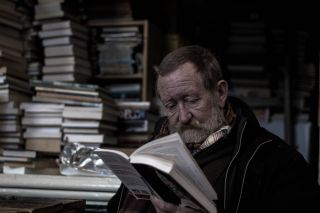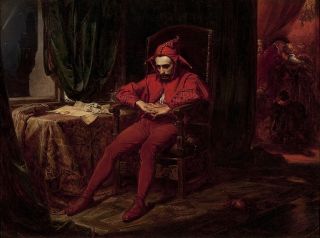Matthew Clemente, Ph.D. and David Goodman, Ph.D.
- In the age of viral videos, we tend to either condemn or offer condescending pity to others.
- A fuller notion of compassion involves imagining our way into the minds of our fellow sufferers.
- Literature opens us to the possibility of seeing the world through other perspectives.
- Cultivating such an ability enables us to be more compassionate for our clients and for one another.

In The Unbearable Lightness of Being, the 20th century Czech novelist Milan Kundera unpacks the etymology of the word “compassion.” Languages that derive their understanding of compassion from Latin (com-, “with”; passio, “suffering”) tend to view compassion as synonymous with pity. Understood as such, compassion is the recognition of another’s suffering at a distance, a sympathy that looks on from without. For Kundera, such a disposition “connotes a certain condescension towards the sufferer. ‘To take pity on a woman’ means that we are better off than she, that we stoop to her level, lower ourselves.”
In contrast, languages such as Czech, Polish, German, and Swedish form their words for compassion by combining an equivalent prefix with a word that means “feeling.” Compassion thus becomes a kind of co-feeling or feeling with that enables one “to feel what wretches feel,” as Shakespeare’s King Lear puts it. Such an art of emotional telepathy, Kundera says, is the supreme virtue, “the maximal capacity of affective imagination.” It is the empathic ability to think one’s way into the minds of others and spend time walking around in their shoes.
In the age of viral videos and identity politics, when media is ubiquitous and increasingly designed to generate clicks, this fuller form of compassion seems to be on the wane. We are bombarded daily with images of cruelty, injustice, and the callousness of human affairs. Corporations and politicians fuel our desire for spectacle in an effort to monopolize our attention. Who can resist such alluring sights and love the sinner while hating the sin, as Gandhi (following the medieval theologian St. Augustine) suggests? What is more, who would want to? The sin, after all, is repugnant and it is constantly being thrust before us. What role does “co-feeling” play in a world of violence and iniquity?
Mental health clinicians are confronted each day with stories of meanness, abuse, and neglect. We treat the ravages of trauma and attend to the destruction that profound suffering leaves in its wake.
And while our clients are often the victims of unspeakable tragedies, they are also often the authors of the pain and sorrow that they experience. To say this is to acknowledge the complex humanity of the sufferers we meet. It is to be honest about the agency and lack thereof that exist side by side in the messiness of human existence. Yet acknowledgement and honesty are hardly enough.
In his recent writing on trauma, the Irish philosopher Richard Kearney speaks of the significance of “wounded healers,” those capable of healing others because they themselves carry similar wounds. The examples Kearney uses to illustrate this point – Odysseus, Oedipus, Jacob, Christ – come to us by way of literature. This is no mere coincidence. Standing athwart the all-too-human tendencies to demonize and condemn or sympathize and offer condescending pity, great works of literature remind us of the humanity of others by allowing us to imagine our way into their woundedness and hear their stories from within.

National Museum in Warsaw / Public Domain
Consider an example from a classic work of Russian literature. Dostoevsky’s Crime and Punishment centers on the murder of a miserly old pawnbroker by an ill-humored law student named Raskolnikov. Neither the victim nor her killer starts out as a particularly sympathetic character, the former being a crass penny pincher, the latter being so convinced of his Napoleonic greatness that he has no problem spilling blood.
As we follow Raskolnikov, however, and witness his story progress from the time leading up to murder to his mental breakdown that follows to his arrest, conviction, and incarceration, we learn to see him not as some irredeemable fiend but as a complex human being driven by forces and desires that affect us all.
The catalyst for this conversion is Raskolnikov’s story. Were we to be given a diagnosis up front – throughout the novel, various psychologists testify to his “temporary insanity,” “morbid monomania,” and “hypochondriac state of mine” – we would not see through the criminal and deranged behavior to the fellow sufferer hidden beneath.
Rather, it is by witnessing Raskolnikov’s care for the dying Marmeladov (an unlikable character in his own right whose anguish comes to inspire a similar empathetic turn in readers) that we begin to see him not as a murderer but as a man. It is by imaginatively entering into his desperation and destitution, his love for his sister, his harrowing dreams set near the graveyard in which his infant brother lies, his genius and his pride, the mercy he receives from Sonya and the humility it takes to accept it – it is by walking alongside him with co-feeling, as those also wounded by this life, that we begin to understand.
The power of literature resides in this: it teaches compassion where the world tells us to pity or condemn. Imagine a world in which Raskolnikov is being judged on social media. Imagine the vitriol and the rage. Now imagine Raskolnikov seeking psychological care. Would he be better served by someone ready to listen, to hear his story and enter it alongside him, or by someone who pities him from without, maintaining the sterile distance of the expert, unmoved by a fellow sufferer’s wounds?
Dostoevsky provides an answer. For while he is quick to caution against identifying too closely with another’s feelings – as Ivan notes in The Brothers Karamazov, “another man will never be able to know the degree of my suffering, because he is another and not me” – Crime and Punishment offers us the compassion of Sonya, a woman who, forced by her own poverty into a life of bondage and ill repute, is able to feel what Raskolnikov feels and thus reveal him to himself.
In Sonya, Raskolnikov finds the compassion of a wounded healer. And if we learn to be attentive readers, perhaps we can too.
References
Dostoyevsky, F. (2002). The Brothers Karamazov: a novel in four parts with epilogue. Trans. Pevear & Volokhonsky. Farrar, Straus and Giroux.
Dostoyevsky, F. (1993). Crime and Punishment: a novel in six parts with epilogue. Trans. Pevear & Volokhonsky. Vintage Books.
Kearney. R. (2021). Touch: Recovering Our Most Vital Sense. Columbia University Press.
Kundera. M. (1987). The Unbearable Lightness of Being. Trans. Heim. Harper & Row.
